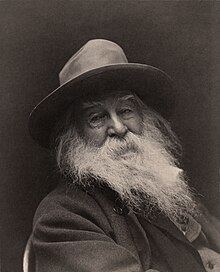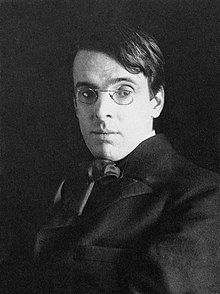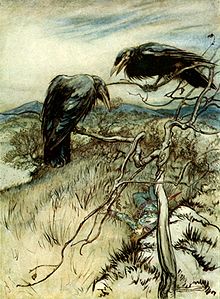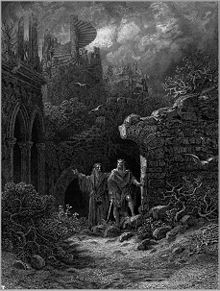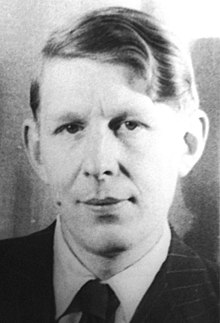"Somewhere i have never travelled, gladly beyond"
Theme- Love is the clear theme of this poem.
Speaker-The speaker is a man who is in love and dumbfounded by it's mystery. Many believe the speaker is Cummings.
Tone- The tone of the poem is mystified by the effects love has on the speaker.
Importance to society-The poem was written during the Great Depression. Many readers were looking for happiness and love in a world focused on survival.
Rhythm and Pattern -This poem has five verse paragraphs, displaying Cummings' signature style: odd use of punctuation and spacing, unusual word order, and other variant uses of language.
Rhyme Scheme- This poem has no specific rhyme scheme. It is a free verse poem.
"Anyone lived in a pretty how town"
The poem was adapted into a short film of the same name by George Lucas.
Style- In the poem, Cummings states the lines, "spring summer autumn winter", (3) and "sun moon stars rain", (8) multiple times. In reiterating these lines he changes the order of the seasons, "autumn winter spring summer", (11) and "stars rain sun moon", (21).
The canterbury tales
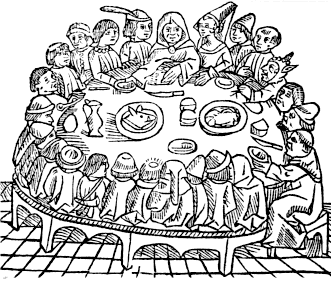 The Canterbury Tales (Middle English: Tales of Caunterbury) is a collection of 24 stories that runs to over 17,000 lines written in Middle English by Geoffrey Chaucer. In 1386, Chaucer became Controller of Customs and Justice of Peace and, three years later, Clerk of the King's work in 1389. It was during these years that Chaucer began working on his most famous text, The Canterbury Tales. The tales (mostly written in verse, although some are in prose) are presented as part of a story-telling contest by a group of pilgrims as they travel together on a journey from London to Canterbury in order to visit the shrine of Saint Thomas Becket at Canterbury Cathedral. The prize for this contest is a free meal at the Tabard Inn at Southwark on their return.
The Canterbury Tales (Middle English: Tales of Caunterbury) is a collection of 24 stories that runs to over 17,000 lines written in Middle English by Geoffrey Chaucer. In 1386, Chaucer became Controller of Customs and Justice of Peace and, three years later, Clerk of the King's work in 1389. It was during these years that Chaucer began working on his most famous text, The Canterbury Tales. The tales (mostly written in verse, although some are in prose) are presented as part of a story-telling contest by a group of pilgrims as they travel together on a journey from London to Canterbury in order to visit the shrine of Saint Thomas Becket at Canterbury Cathedral. The prize for this contest is a free meal at the Tabard Inn at Southwark on their return.It is sometimes argued that the greatest contribution The Canterbury Tales made to English literature was in popularising the literary use of the vernacular, English, rather than French, Italian or Latin. English had, however, been used as a literary language centuries before Chaucer's time, and several of Chaucer's contemporaries—John Gower, William Langland, the Pearl Poet, and Julian of Norwich—also wrote major literary works in English. It is unclear to what extent Chaucer was responsible for starting a trend as opposed to simply being part of it.
>> General Prologue
The General Prologue is the first part of Chaucer's The Canterbury Tales.The frame story of the poem, as set out in the 858 lines of Middle English which make up the general prologue, is of a religious pilgrimage. The narrator, Geoffrey Chaucer, is in The Tabard Inn in Southwark, where he meets a group of "sundry folk" who are all on the way to Canterbury, the site of the shrine of Saint Thomas Becket.
The setting is April, and the prologue starts by singing the praises of that month whose rains and warm western wind restore life and fertility to the earth and its inhabitants. This abundance of life, the narrator says, prompts people to go on pilgrimages; in England, the goal of such pilgrimages is the shrine of Thomas Becket. The narrator falls in with a group of pilgrims, and the largest part of the prologue is taken up by a description of them; Chaucer seeks to describe their 'condition', their 'array', and their social 'degree':
- To telle yow al the condicioun,
- Of ech of hem, so as it semed me,
- And whiche they weren, and of what degree,
- And eek in what array that they were inne,
- And at a knyght than wol I first bigynne.
Free verse
Poets have explained that free verse is not totally free; 'its only freedom is from the tyrant demands of the metered line'. Free verse displays some elements of form. Most free verse, for example, self-evidently continues to observe a convention of the poetic line in some sense, at least in written representations, though retaining a potential degree of linkage.
Although free verse requires no meter, rhyme, or other traditional poetic techniques, a poet can still use them to create some sense of structure. A clear example of this can be found in Walt Whitman's poems, where he repeats certain phrases and uses commas to create both a rhythm and structure.
>> Walt Whitman
> "When Lilacs Last in the Dooryard Bloom’d"
"When Lilacs Last in the Dooryard Bloom'd" is a long poem in the form of an elegy written by American poet Walt Whitman (1819–1892) in 1865.
The poem, written in free verse in 206 lines, uses many of the literary techniques associated with the pastoral elegy. It was written in the summer of 1865 during a period of profound national mourning in the aftermath of the assassination of President Abraham Lincoln on April 14, 1865. Despite the poem being an elegy to the fallen president, Whitman neither mentions Lincoln by name nor discusses the circumstances of his death. Instead, Whitman uses a series of rural and natural imagery including the symbols of the lilacs, a drooping star in the western sky (Venus), and the hermit thrush, and employs the traditional progression of the pastoral elegy in moving from grief toward an acceptance and knowledge of death. The poem also addresses the pity of war through imagery vaguely referencing the American Civil War (1861–1865) which ended only days before the assassination.
W.B. Yeats
>> "The Lake Isle of Innisfree"
"Lake Isle of Innisfree" exemplifies the style of the Celtic Revival: it is an attempt to create a form of poetry that was Irish in origin rather than one that adhered to the standards set by English poets and critics. It received critical acclaim in the United Kingdom and France.
The twelve-line poem is divided into three quatrains and is an example of Yeats's earlier lyric poems. Throughout the three short quatrains the poem explores the speaker’s longing for the peace and tranquility of Innisfree while residing in an urban setting.
William Wordsworth
Wordsworth's magnum opus is generally considered to be The Prelude, a semiautobiographical poem of his early years that he revised and expanded a number of times. It was posthumously titled and published, before which it was generally known as "the poem to Coleridge". Wordsworth was Britain's Poet Laureate from 1843 until his death in 1850.
>> "I Wandered Lonely as a Cloud"
The poem was inspired by an event on 15 April 1802, in which Wordsworth and his sister Dorothy came across a "long belt" of daffodils. Written some time between 1804 and 1807 (in 1804 by Wordsworth's own account), it was first published in 1807 in Poems in Two Volumes, and a revised version was published in 1815.
In a poll conducted in 1995 by the BBC Radio 4 Bookworm programme to determine the nation's favourite poems, I Wandered Lonely as a Cloud came fifth. Often anthologised, the poem is commonly seen as a classic of English romantic poetry, although Poems in Two Volumes, in which it first appeared, was poorly reviewed by Wordsworth's contemporaries.
Merman Melville
>> Moby-Dick
The product of a year and a half of writing, the book draws on Melville's experience at sea, on his reading in whaling literature, and on literary inspirations such as Shakespeare and the Bible. The detailed and realistic descriptions of whale hunting and of extracting whale oil, as well as life aboard ship among a culturally diverse crew, are mixed with exploration of class and social status, good and evil, and the existence of God. In addition to narrative prose, Melville uses styles and literary devices ranging from songs, poetry, and catalogs to Shakespearean stage directions, soliloquies, and asides.
Dedicated to Nathaniel Hawthorne, "in token of my admiration for his genius", the work was first published as The Whale in London in October 1851, and under its definitive title in New York in November. Hundreds of differences, mostly slight and some important, are seen between the two editions. The London publisher censored or changed sensitive passages and Melville made revisions, as well, including the last-minute change in the title for the New York edition. The whale, however, appears in both editions as "Moby Dick", with no hyphen. About 3,200 copies were sold during the author's life.
Book of Revelation
>>Apocalypse
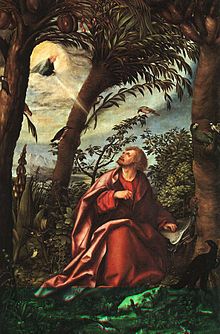 |
| St. John at Patmos: the receiving of an apocalyptic vision |
In the Book of Revelation, the last book of the New Testament, the revelation which John receives is that of the ultimate victory of good over evil and the end of the present age, and that is the primary meaning of the term, one that dates to 1175.
Today, it is commonly used in reference to any prophetic revelation or so-called end time scenario, or to the end of the world in general.

